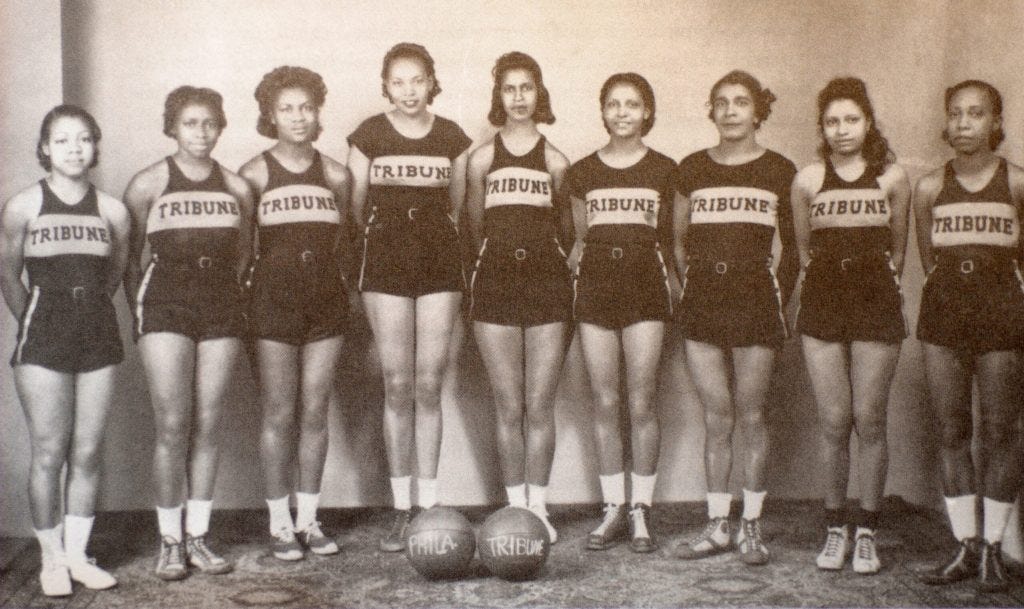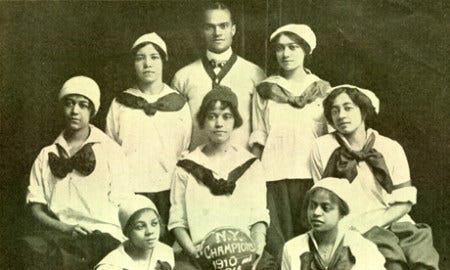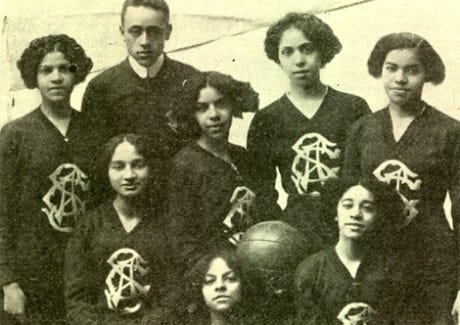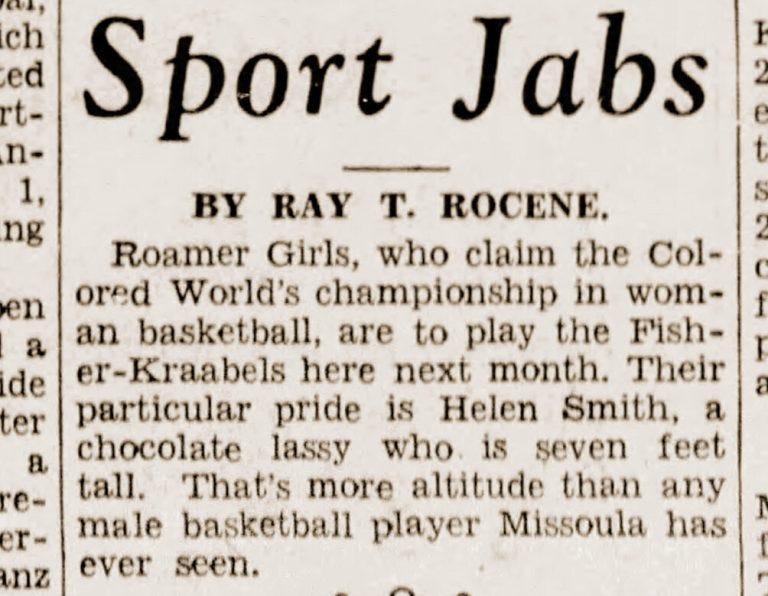The Ladies of the Black Fives Era
Uncovering Black women's contribution to the popularity of basketball amongst Black people
It wasn’t just the men getting in on the action. You know women are always around somewhere!
In 1910, one of the very first independently organized teams was the New York Girls in Harlem as a sister club to the Alpha Physical Culture Club men’s basketball team.
Their rivals, the Spartan Girls of Brooklyn, were the sister team to the Smart Set Athletic Club men’s organization. A third team, the Jersey Girls, was organized in nearby Orange, New Jersey, and affiliated with the men of that city’s all-black Independent Pleasure Club.
The all-black Tribune Girls of Philadelphia dominated women’s basketball for over a decade. Originally known as the Philadelphia Quick Steppers, the Tribune Girls were organized in the late 1920s and got their name when team manager Inez Patterson proposed a sponsorship arrangement with the Philadelphia Tribune, one of the country’s leading African American newspapers.
The deal allowed Tribune Girls free advertising and promotion in return for the name change.
After adding future Basketball Hall of Fame member Ora Washington to the roster, they dominated all competition, winning eleven straight Women’s Colored Basketball World’s Championship during the 1930s and early 1940s.

The Roamer Athletic Club women’s basketball team, known as the Roamer Girls, was formed in Chicago in 1921.
Originally affiliated with the city’s Grace Presbyterian Church’s Sunday School, the all-Black squad played home games at the Bronzeville’s famed Eighth Regiment Armory and featured stars such as 6-foot 7-inch center Helen Smith, Kate Bard, Lula Porter, and Isadore “Izzy” Channels.
When the Roamer Girls joined the women’s division of the Chicago City Basketball League in 1925, competing against white and Black teams throughout the city and captivating fans. This continued well into the 1930s with their barnstorming strips throughout the Midwest and West, inspiring new generations of female ballers for years to come.
Black women’s basketball teams played using the slightly altered version of the men’s rules. Most of the time there were five players per side, but in some parts of the country, particularly in the South, six players were used, three on offense and three on defense.
The teams and players of the Black Fives Era generated hope, aspiration, pride, unity, pragmatism, and self-esteem among Blacks during a pivotal period in Black history. The men and women of the Black Fives Era were true basketball pioneers whose desire simply to play their best and innovate the game opened doors for generations of Black players.
Thanks for reading The Unknown Knowns! Subscribe for free to receive new posts and support my work.





